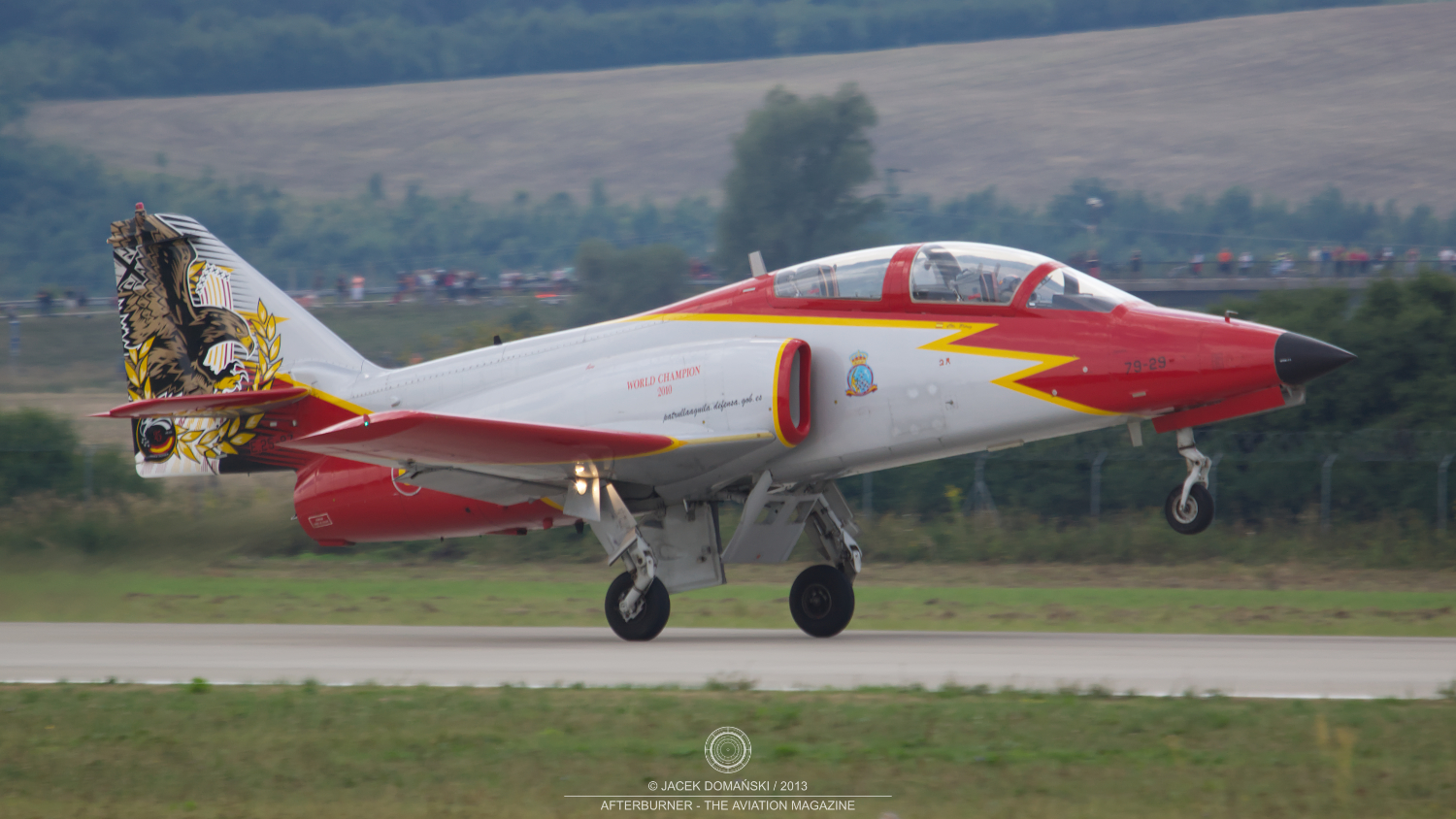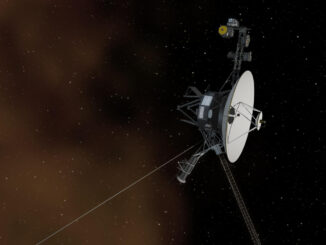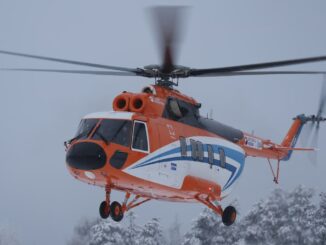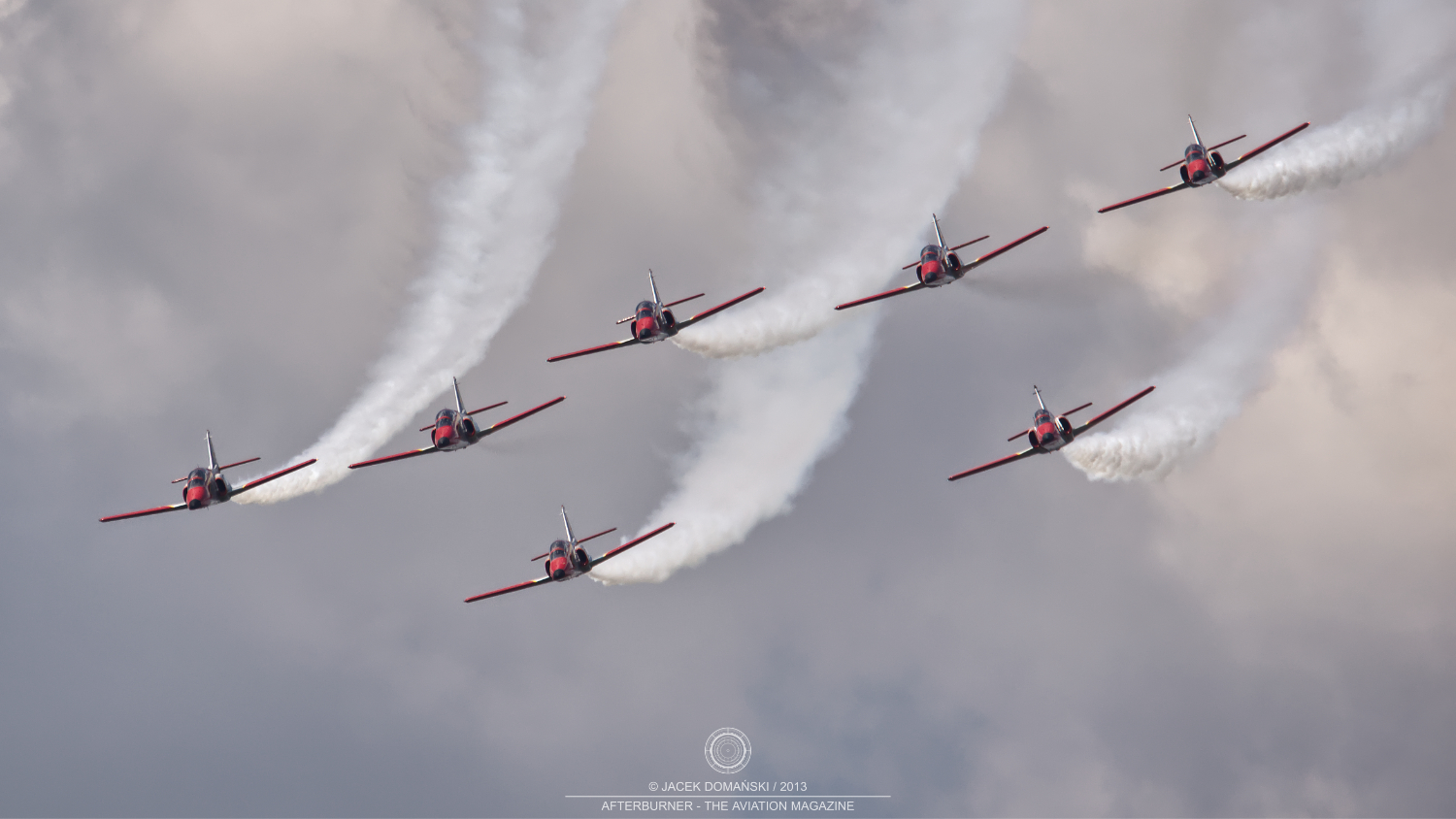 On 27th June 1977, the Spanish training jet aircraft, CASA C-101 Aviojet, performed its first flight.
On 27th June 1977, the Spanish training jet aircraft, CASA C-101 Aviojet, performed its first flight.
The Aviojet was developed in response to the Spanish Air Force (since 2022 known as the Spanish Air and Space Force – Ejército del Aire y del Espacio) requirement from 1975. The new, advanced jet training aircraft was needed to replace the country´s current fleet of Hispano HA-200 Saeta/HA-220 Super Saeta trainers – introduced into operational service in the early 1960s and being the first Spanish-designed and manufactured jet aeroplane.
Development of the new aircraft was assigned to Construcciones Aeronáuticas SA (CASA). Although the Spanish aviation company had more than fifty years of experience in aircraft manufacturing, it asked several foreign entities for assistance in the project. Eventually, an interest to participate in development of the new Spanish trainer was received from Messerschmitt-Bölkow-Blohm and Northrop companies.
On 27th June 1977, the new training aircraft successfully performed its maiden flight. The CASA C-101 Aviojet, as the aeroplane was officially designated, was a low-wing monoplane, powered by single Honeywell TFE731-5-1J turbofan engine. The Aviojet featured a two-seat cockpit in tandem configuration and a limited attack capability including an internal weapon bay located beneath the cockpit. Contrary to other Western jet training aircraft from the era, such as BAe Hawk and Alpha Jet, the C-101 was equipped with non-swept wings.
In March of 1980, the C-101BB, as the main training variant was designated, was introduced into operational service with the Spanish Air Force. Three years later, a dedicated attack version was developed by CASA, designated C-101CC.
Although Spain remained the primary user of the Aviojet, with eighty-eight examples of the aircraft ordered, the C-101 was also sold to Chile (in both training and attack variants), Honduras and Jordania.
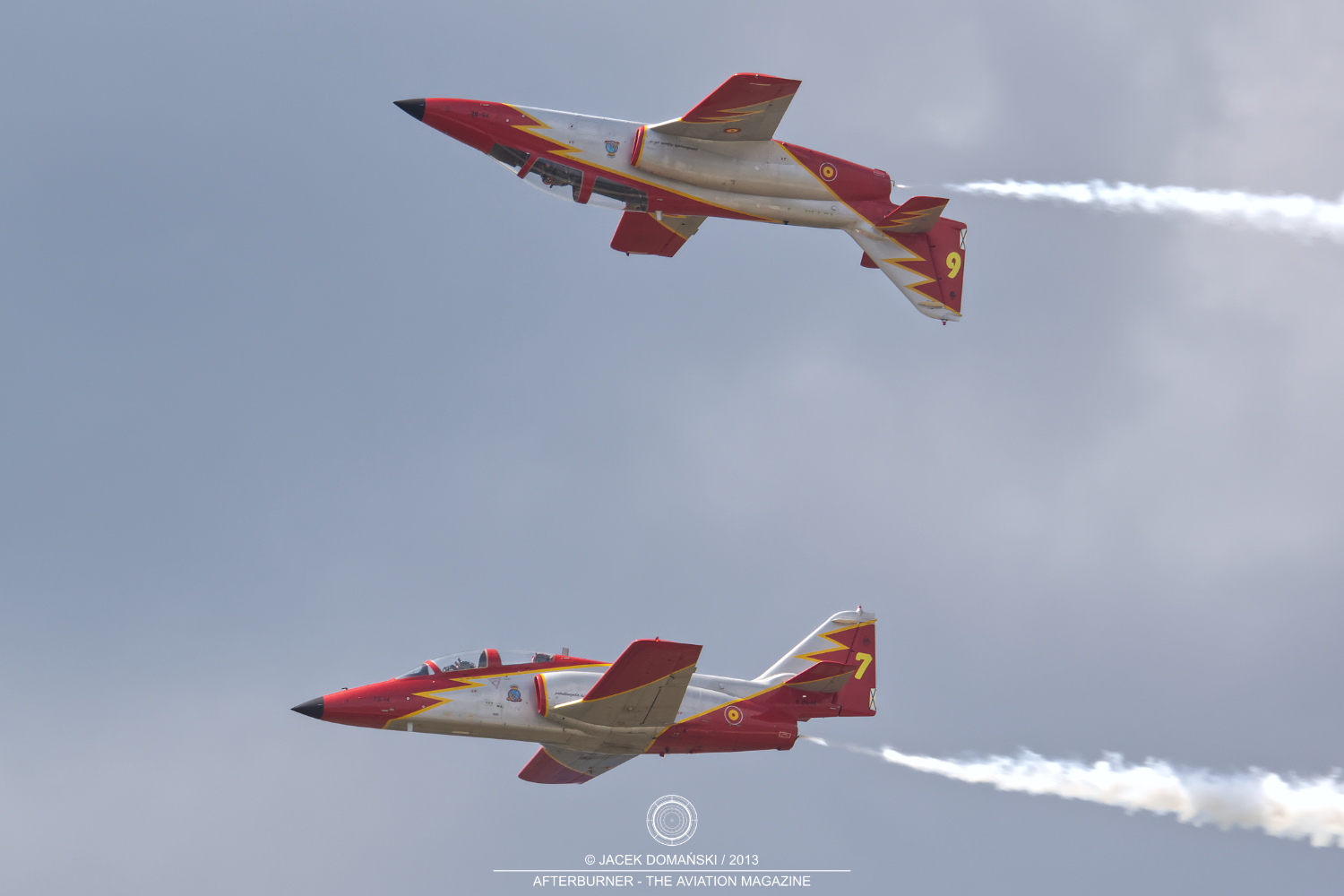
In 1985, the Spanish Air Force formed its jet display team, named Patrulla Águila (English: Eagle Patrol) and flying with the C-101 aeroplanes. For four decades, the team was a pillar of the Spanish Air Force. According to the official press release of the country´s Ministry of Defence, the team performed more than five hundred displays (with over 170 of them shown abroad) and accumulated approximately 30,000 flight hours.
In the early 2010s, the Spanish military authorities commenced the C-101 retirement process. At the beginning, the goal was set to withdraw the Aviojet from active service until 2020 but that term was later extended with five more years.
Initially, the aircraft had to be replaced by Airbus Future Jet Trainer (AFJT), developed by Airbus Spain. It was also considered as the new Patrulla Águila display aeroplane but in 2022 the project was finally rejected by the Spanish MoD, due to financial reasons. Therefore, Pilatus PC-21 turboprop advanced trainer was chosen as the future training aircraft of the Spanish Air Force.
In the meantime, the Royal Jordanian Air Force was the first to withdraw the C-101 from active service. The first six examples of the aircraft were offered for sale yet in 2016 and all the Jordanian Aviojets were retired by 2018.
In August of 2022, the C-101 was officially retired from the training duties with the Spanish Air Force and Patrulla Águila aircraft remained the last operational Aviojets in the country. In December of the same year, the C-101 were withdrawn from service with the Chilean Air Force and succeeded by Embraer A-29B Super Tucano. Not much is known about the Aviojets from the Honduran Air Force, the aircraft were rarely operated and finally put in storage in the early 2000s.
On 14th and 15th June 2025, during the Aire25 air show, Patrulla Águila performed its final display with the CASA C-101 Aviojet aircraft. In July and August of this year, the team should receive the PC-21 aeroplanes and their pilots are expected to begin training flights to master the new aircraft.
More information about Patrulla Águila team can be also found in our article from February of 2025 – 40th anniversary of Patrulla Águila and the final performance of the Spanish jet aerobatic team.
